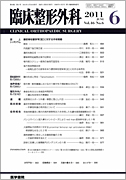1) Ahn J, Ludecke HJ, Lindow S, et al:Cloning of the putative tumour suppressor gene for hereditary multiple exostoses (EXT1). Nat Genet 11(2):137-143, 1995
2) Kojima H, Wada T, Seki H, et al:One third of Japanese patients with multiple osteochondromas may have mutations in genes other than EXT1 or EXT2. Genet Test 12(4):557-561, 2008
3) Lind T, Tufaro F, McCormick C, et al:The putative tumor suppressors EXT1 and EXT2 are glycosyltransferases required for the biosynthesis of heparan sulfate. J Biol Chem 273(41):26265-26268, 1998
4) Lonie L, Porter DE, Fraser M, et al:Determination of the mutation spectrum of the EXT1/EXT2 genes in British Caucasian patients with multiple osteochondromas, and exclusion of six candidate genes in EXT negative cases. Hum Mutat 27(11):1160, 2006
5) Matsumoto K, Irie F, Mackem S, et al:A mouse model of chondrocyte-specific somatic mutation reveals a role for Ext1 loss of heterozygosity in multiple hereditary exostoses. PNAS 15:107(24):10932-10937, 2010
6) Schmale GA, Conrad EU 3rd, Raskind WH:The natural history of hereditary multiple exostoses. J Bone Joint Surg Am 76:986-992, 1994
7) Stickens D, Clines G, Burbee D, et al:The EXT2 multiple exostoses gene defines a family of putative tumour suppressor genes. Nat Genet 14:25-32, 1996
8) Stickens D, Zak BM, Rougier N, et al:Mice deficient in Ext2 lack heparan sulfate and develop exostoses. Development 132:5055-5068, 2005
9) Szuhai K, Jennes I, de Jong D, et al:Tiling resolution array-CGH shows that somatic mosaic deletion of the EXT gene is causative in EXT gene mutation negative multiple osteochondromas patients. Hum Mutat 32(2):E2036-E2049, 2011

